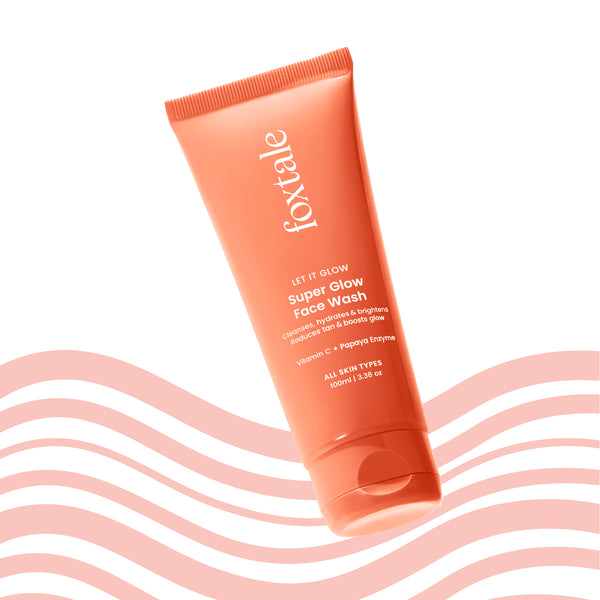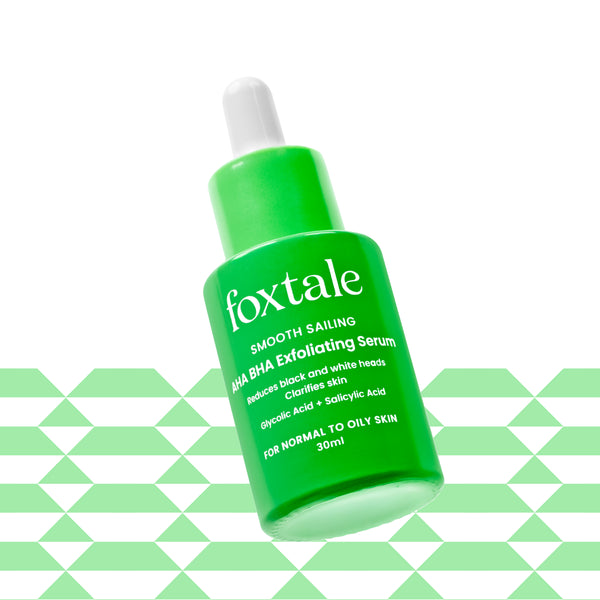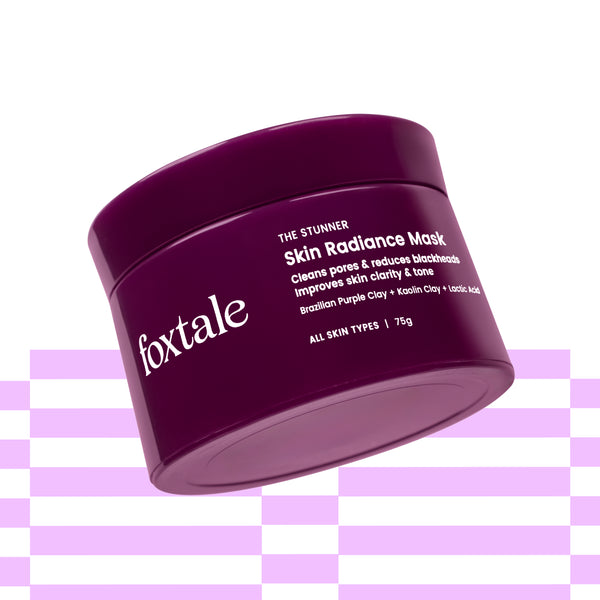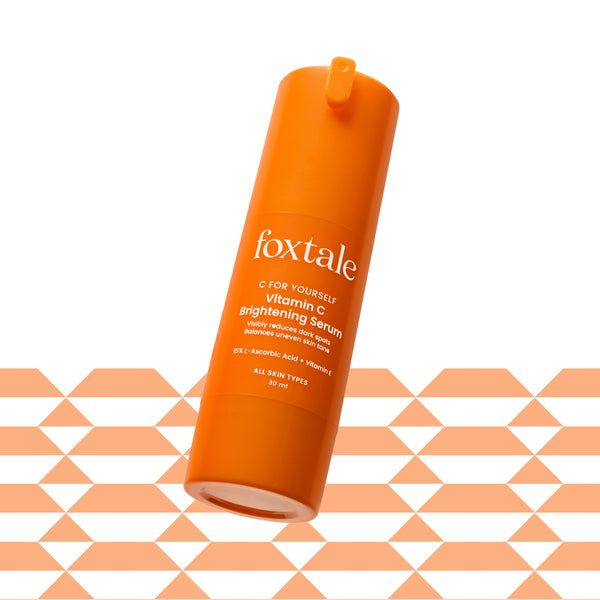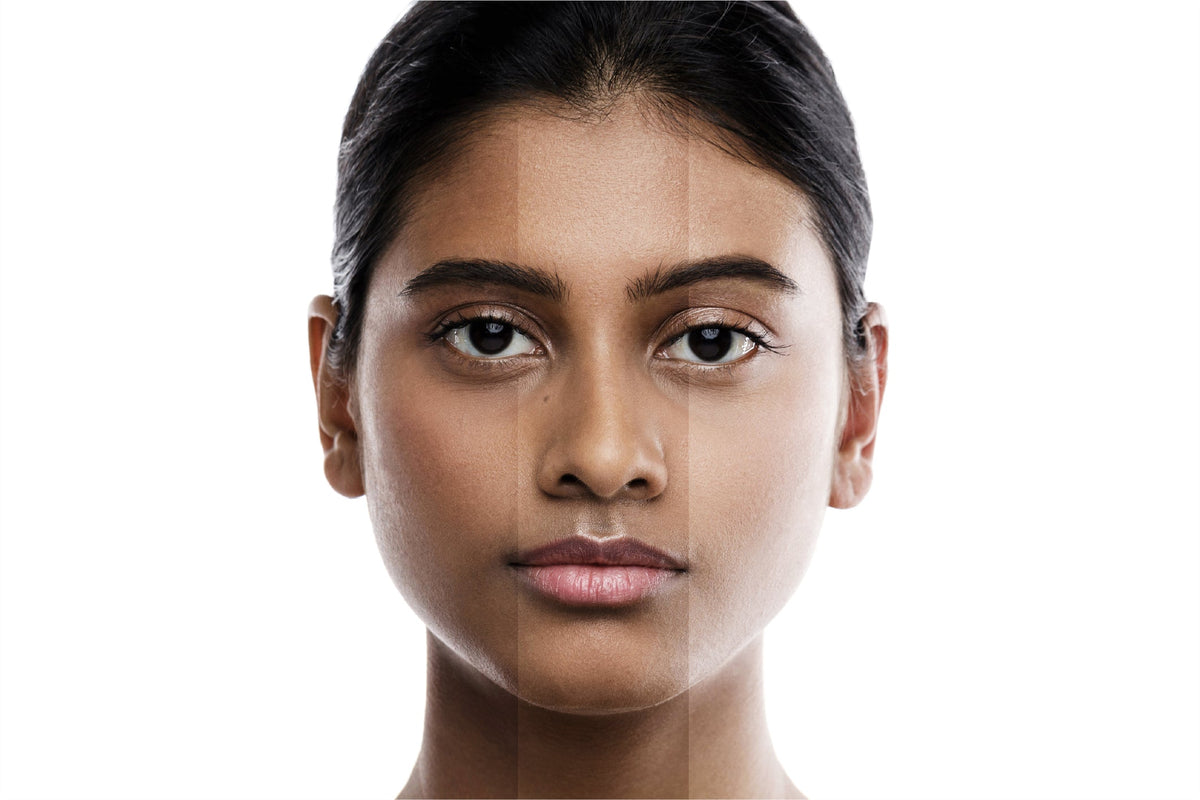
Tanning may be common, but that doesn’t mean it’s harmless. Whether from long commutes or a beach trip, sun exposure triggers melanin production, which darkens the skin to protect it from UV damage. But once the tan sets in, you’ll need more than a de tan face wash to get rid of it.
Let’s walk through how to remove tan in just seven days—without damaging your skin barrier in the process.
What Causes Skin Tan?
When your skin is exposed to UV rays, it produces melanin as a defense. That buildup is what creates visible tanning.
Why Removing Tan Quickly is Important for Your Skin Health
While some consider tan temporary, leaving it untreated can lead to uneven tone, dark patches, and premature aging. Tackling it early helps restore your natural skin tone and prevents long-term damage.
How Can I Remove Tan in 7 Days?
To fade tan fast, you need a plan that combines exfoliation, brightening, hydration, and sun protection. Here’s how to approach it.
Exfoliate to Remove Dead Skin Cells
Tan settles in the outermost skin layers. Removing dead cells helps fresh skin resurface faster.
Why Exfoliation is Crucial in Tan Removal
Exfoliation accelerates cell turnover, allowing fresh, untanned skin to appear more quickly.
Exfoliating Products for Quick Results
Use a chemical exfoliant 2–3 times this week. A product like AHA BHA serum combines Glycolic Acid and Salicylic Acid to dissolve buildup and clear pores without scrubbing.
How Often Should You Exfoliate for Tan Removal?
Stick to 2–3 times per week. Overdoing it can damage your skin barrier and delay healing.
Use De-Tan Face Wash and Brightening Agents
Replace your regular cleanser with a de-tan face wash designed to reduce pigmentation.
How a De-Tan Face Wash Helps in Tan Removal
It helps remove dull surface cells and supports brightness. Look for ingredients like Vitamin C or Niacinamide.
How to Effectively Use De-Tan Face Wash for Maximum Results
Use it twice a day, and massage it in for 30 seconds before rinsing. This allows the actives to work effectively.
1. Skin Brightening Serums for Tan Removal (Vitamin C Serum)
Vitamin C helps fade tan, reduce melanin production, and brighten your complexion. Apply it every morning after cleansing and before moisturizer.
2. Natural Ingredients for Skin Brightening (Lemon, Aloe Vera, Turmeric)
These ingredients help lighten pigmentation naturally. Aloe vera soothes, lemon mildly exfoliates, and turmeric reduces dullness.
3. Use a De-Tan Face Pack
For quicker results, use a de tan face pack 2–3 times during the week.
Why De-Tan Face Masks Are Effective for Removing Tan
They help draw out impurities, calm inflammation, and visibly improve tone.
1. Best De-Tan Face Masks and How to Use Them
Apply an even layer, leave it on for 10–15 minutes, and rinse with cool water. Always follow up with a moisturizer.
2. Hydrating Ingredients That Promote Skin Repair
Exfoliating and brightening products can dry out your skin. Hydrating ingredients like Hyaluronic Acid, Aloe Vera, or Glycerin soothe and repair.
3. Protect and Maintain Your Tan-Free Skin
No tan removal plan is complete without sunscreen.
4. Daily Sunscreen Application to Prevent Re-Tanning
UV rays continue to trigger melanin—even through windows or on cloudy days. Apply a broad-spectrum sunscreen every morning.
5. How to Maintain Clear Skin After Tan Removal
Stay hydrated, follow a gentle routine, and avoid mid-day sun to maintain results.
Advanced Skin Treatments for Faster Tan Removal
1. Chemical Peels for Deep Tan Removal
If your tan is deep or uneven, a dermatologist may recommend a Glycolic or Lactic acid peel. These treatments remove surface pigmentation faster than OTC products.
2. Laser Treatments for Stubborn Tan Removal
For deep, persistent tan, laser treatments like Q-switched Nd:YAG can help. These should only be performed by a trained professional.
Diet and Lifestyle Tips to Accelerate Tan Removal
1. Foods That Help Fade Tan and Promote Skin Health
Your diet plays a key role in how quickly your skin repairs and regenerates.
2. Vitamin-C Rich Foods for Skin Brightening
Oranges, amla, guava, and bell peppers help suppress melanin and support skin recovery.
3. Hydrating Foods to Boost Skin Repair
Cucumbers, watermelons, and leafy greens provide water and antioxidants to aid healing.
4. Avoid Sun Exposure and Further Skin Damage
During these 7 days, avoid stepping out in the peak sun and wear protective clothing.
5. The Role of Sun Protection in Maintaining Tan-Free Skin
Sun protection keeps skin safe from further darkening while it heals.
6. Effective Sun Protection Measures (SPF, Clothing, Shade)
Use SPF 30+ daily, reapply every 2–3 hours outdoors, wear full sleeves, hats, and stay in the shade when possible.
Common Mistakes to Avoid While Removing Tan in a Week
1. Over-Exfoliating and Irritating Your Skin
Using scrubs or acids too often can irritate or inflame the skin. Stick to 2–3 exfoliation sessions per week.
2. Ignoring Skin Sensitivity After Tan Removal Treatments
Skin may be more reactive after exfoliation or masks—use calming ingredients and avoid actives if irritation occurs.
3. Skipping Sunscreen During Treatment Phase
Even a little sun without SPF can undo your progress. Apply sunscreen for oily skin daily, indoors and out.
Conclusion
You can absolutely fade a tan in a week with the right routine. Focus on gentle exfoliation, targeted brightening, deep hydration, and consistent sun protection. Combine smart skincare with a supportive diet—and your natural skin tone will return faster than you think.
FAQs
How to avoid sun tan?
Apply SPF 30+ every day, wear full-sleeve clothing, and avoid peak UV hours. Reapply sunscreen when outdoors for long periods.
How to remove lip tan?
Use a gentle lip scrub twice a week. Apply honey or aloe vera at night. During the day, use a lip balm with SPF.
Can coffee remove tan?
Coffee can help mildly exfoliate, but it won’t remove tan as effectively as actives like AHAs or Vitamin C.
What's the fastest way to remove tan?
Use a combination of chemical exfoliation, a Vitamin C serum, and a de-tan mask—along with daily sunscreen and hydration. Visible results often appear within 5–7 days.

